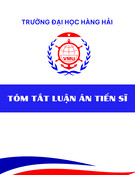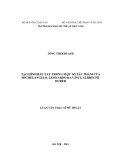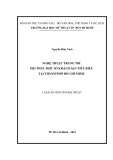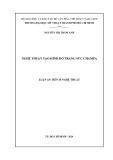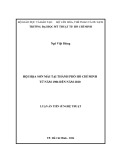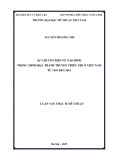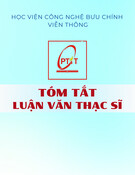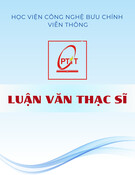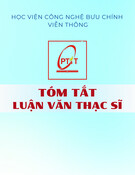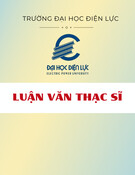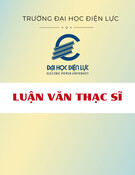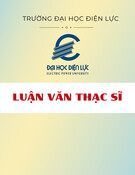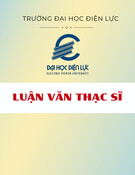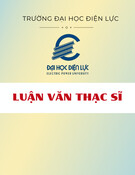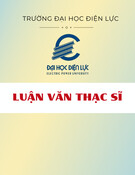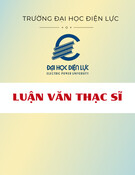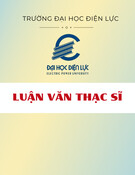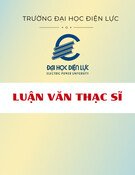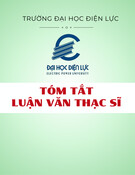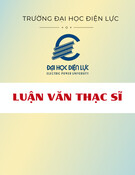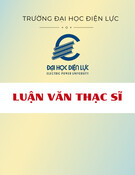
AN ECONOMIC ANALYSIS OF THE AUCTION
MARKET FOR AUSTRALIAN ART:
EVIDENCE OF INDIGENOUS DIFFERENCE AND
CREATIVE ACHIEVEMENT
Bronwyn Simone Coate
B.Ec. (Hons.), Grad. Dip. Acc.
School of Economics, Finance and Marketing
College of Business
RMIT University
August 2009
‘A thesis submitted in fulfilment of the requirements for the degree of
Doctor of Philosophy from the Royal Melbourne Institute of Technology’

CERTIFICATION
I certify that except where due acknowledgement has been made, the work is that of the
candidate alone; and the whole work has not been submitted previously, in whole or
part, to qualify for any other academic award; and the content of the thesis is the result
of work which had been carried out since the official commencement date of the
approved research program.
Bronwyn Simone Coate
August 2009
(ii)

ACKNOWLEDGEMENT
There are a number of people who have each played invaluable roles in providing
support and encouragement to help make this thesis possible. First and foremost I am
most grateful and appreciative of the constructive advice and feedback given by my
principal supervisor, Professor Tim Fry. I also wish to thank my second supervisor
Professor Robert Brooks who has also provided invaluable guidance and support.
Together Professor’s Fry and Brooks have been supervisors of the highest calibre and
have contributed to making the process of completing this thesis a rewarding and
enriching experience. They each have provided academic and scholarly insight to
stimulate my thinking and approach to addressing the research questions raised within
this thesis but even more importantly they have provided good humour and mentorship
to encourage me as an emerging researcher.
Completing this thesis would simply not have been possible without the support and
commitment that my husband Laszlo has provided. To him I am most grateful and
indebted especially for all the extra load he has shouldered so willingly and without
complaint over the last 6 months in keeping our home in order and caring for our little
boy Imre. Laszlo you are a star. To my son, Imre also I give thanks for his patience and
his well intentioned offers hop on the PC himself to help mum finish her PhD.
I would also like to thank my father, Bruce Coate for his never failing encouragement
and support. Finally I would like to acknowledge my grandfather Midgley Ogden who
remains an inspiration and who would have been proud of this achievement.
Bronwyn Simone Coate
(iii)

CONTENTS
1.0 CHAPTER 1: INTRODUCTION AND OVERVIEW………………………. 4
1.1 Background…………………………………………………………………….... 4
1.2 Australian, Indigenous and Non-indigenous Art Markets………………………. 5
1.2.1
Defining Australian, Indigenous and Non-indigenous Art Markets……………. 6
1.2.2
Innovation in Artistic Practices and Technology Transfers Between Cultures…. 8
1.3 Factors Influencing Supply and Demand of Indigenous and Non-indigenous
Art Markets………………………………………………………………………
9
1.3.1
Indigenous and Non-indigenous Artists as the Source of Art Supply………….. 10
1.3.2
Demand in Global Markets for Cultural Products…..………………………….. 11
1.4 Research Objective……………………………………………………………… 12
1.5 Data Set Overview………………………………………………………………. 14
1.5.1
Size and Scale of the Australian Art Market……………………………………. 15
1.5.2
Artists……………………………………………………………………………. 20
1.6 Thesis Structure…………………………………………………………………. 24
2.0 CHAPTER 2: LITERATURE EVIEW………………………………………. 27
2.1 Introduction……………………………………………………………………….
27
2.1.1
An Economic Definition of ‘Art’………………………………………………... 28
2.1.2
Characteristics of Art as an Economic Good……………………………………..
29
2.2 Auction Markets for Art…………………………………………………………. 31
2.2.1
Auction Theory………………………………………………………………….. 32
2.2.2
How Art Auctions Are Conducted………………………………………………. 34
2.2.3
Art Auctions and Art Market Efficiency………………………………………… 37
2.3 Art Market Studies from the Economics Literature……………………………... 41
2.3.1
Primary Market Studies………………………………………………………….. 41
2.3.2
Art Market Studies that Focus Upon Price Determination………………………. 42
2.3.3
Art Market Studies that Focus Upon Returns to Art Investment…………………
45
2.3.4
Australian Art Market Studies…………………………………………………… 51
2.3.5
Seminal Studies to Define and Refine Method: Hedonic, Repeat Sales and
Trade to Trade Regression Approaches…………………………………………..
53
2.4 Contributions from Other Disciplines and Alternative Perspectives on Areas
Related to the Research…………………………………………………………..
57
(iv)

2.4.1
The Effects of Globalisation on Art and Culture………………………………... 58
2.4.2
Views from Cultural Theory, Sociology and Economic Sociology on the
Construction of Artist Reputation………………………………………………..
62
2.4.3
Insights Towards Understanding the Cultural Significance of Indigenous Art to
Indigenous People………………………………………………………………..
63
2.4.4
How the Primary Market Operates for Indigenous and Non-indigenous Art in
Australia…………………………………………………………………………..
64
2.5 Chapter Conclusion……………………………………………………………… 67
3.0 CHAPTER 3: DESCRIPTION OF THE DATA AND METHOD………….. 69
3.1 Introduction……………………………………………………………………….
69
3.2 Underlying Assumptions………………………………………………………… 70
3.2.1
Rational Expectations and Problems of Information Asymmetry and Imperfect
Information……………………………………………………………………….
71
3.2.2
Price as a Measurement of Economic Valuation and a Framework for
Understanding the Operation of the Australian Art Market……………………..
73
3.3 Research Rationale and Research Questions…………………………………….. 75
3.3.1
Rationale for the Research……………………………………………………….. 75
3.3.2
Research Questions……………………………………………………………….
76
3.3.3
Contributions of the Research to Inform Policy Debate………………………….
79
3.4 Description of Artist, Work and Auction Characteristics of the Data Set……….. 82
3.4.1
Artist Level Attributes of the Data Set………………………………………….. 83
3.4.2
Work Level Attributes of the Data Set………………………………………….. 89
3.4.3
Auction Level Attributes of the Data Set……………………………………….. 93
3.5 Methodological Approach……………………………………………………….. 98
3.5.1
Methodological Individualism…………………………………………………… 98
3.5.2
Hedonic Regression Method…………………………………………………….. 99
3.5.3
Repeat Sales Regression Method…………………………………………………
102
3.5.4
Trade to Trade Regression Method……………………………………………… 105
3.6 Chapter Conclusion……………………………………………………………… 106
4.0 CHAPTER 4: DETERMINANTS OF PRICE IN THE AUSTRALIAN,
INDIGNEOUS AND NON-INDIGNEOUS ART MARKETS AND THE
EFFECT OF ARTIST REPUTATION……………………………………….
108
4.1 Introduction……………………………………………………………………… 108
4.1.1
Background……………………………………………………………………… 109
4.2 Base Model 1: General Model…………………………………………………… 110
4.2.1
Characteristics Included in Base Model 1……………………………………….. 110
(v)

